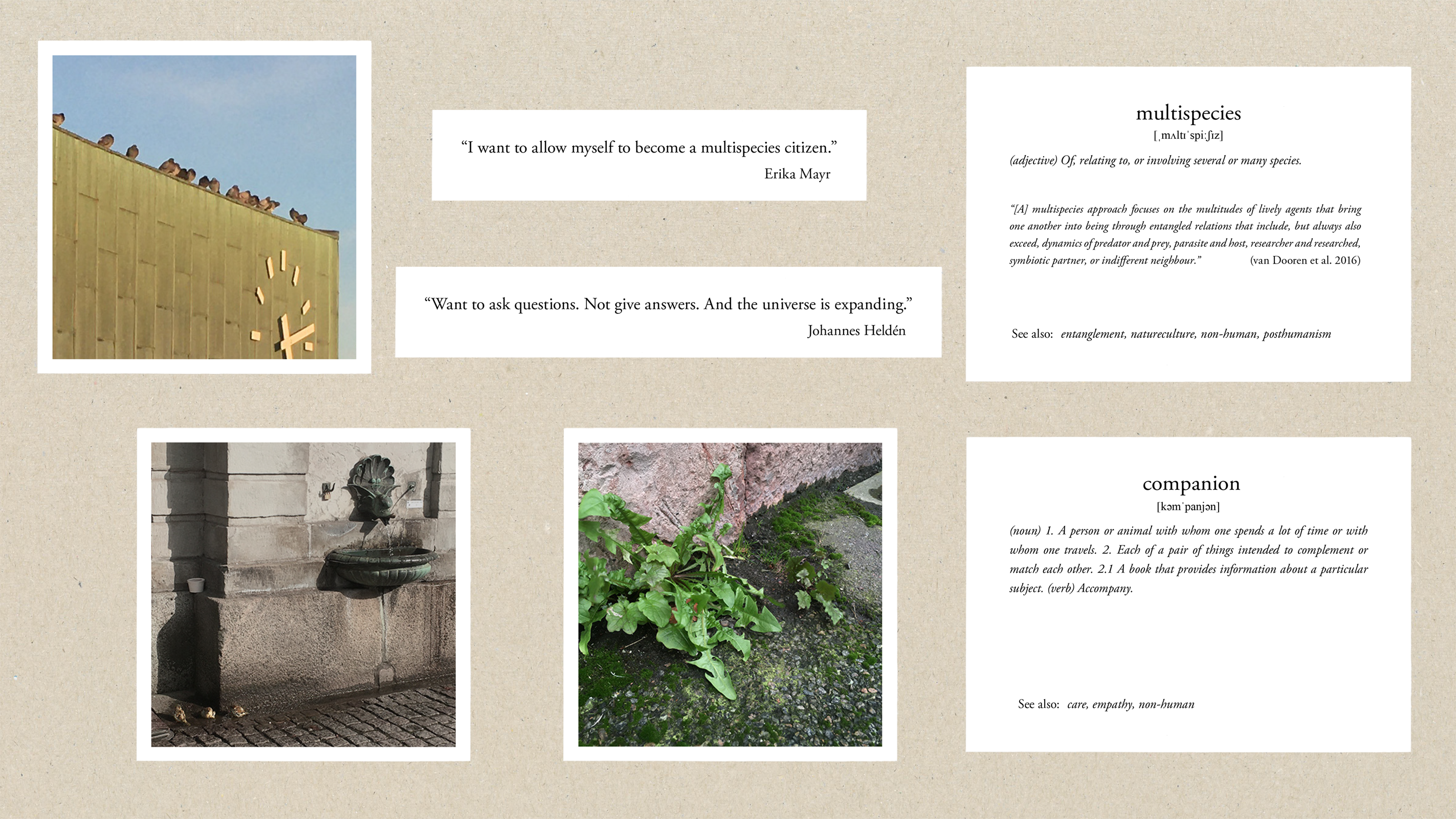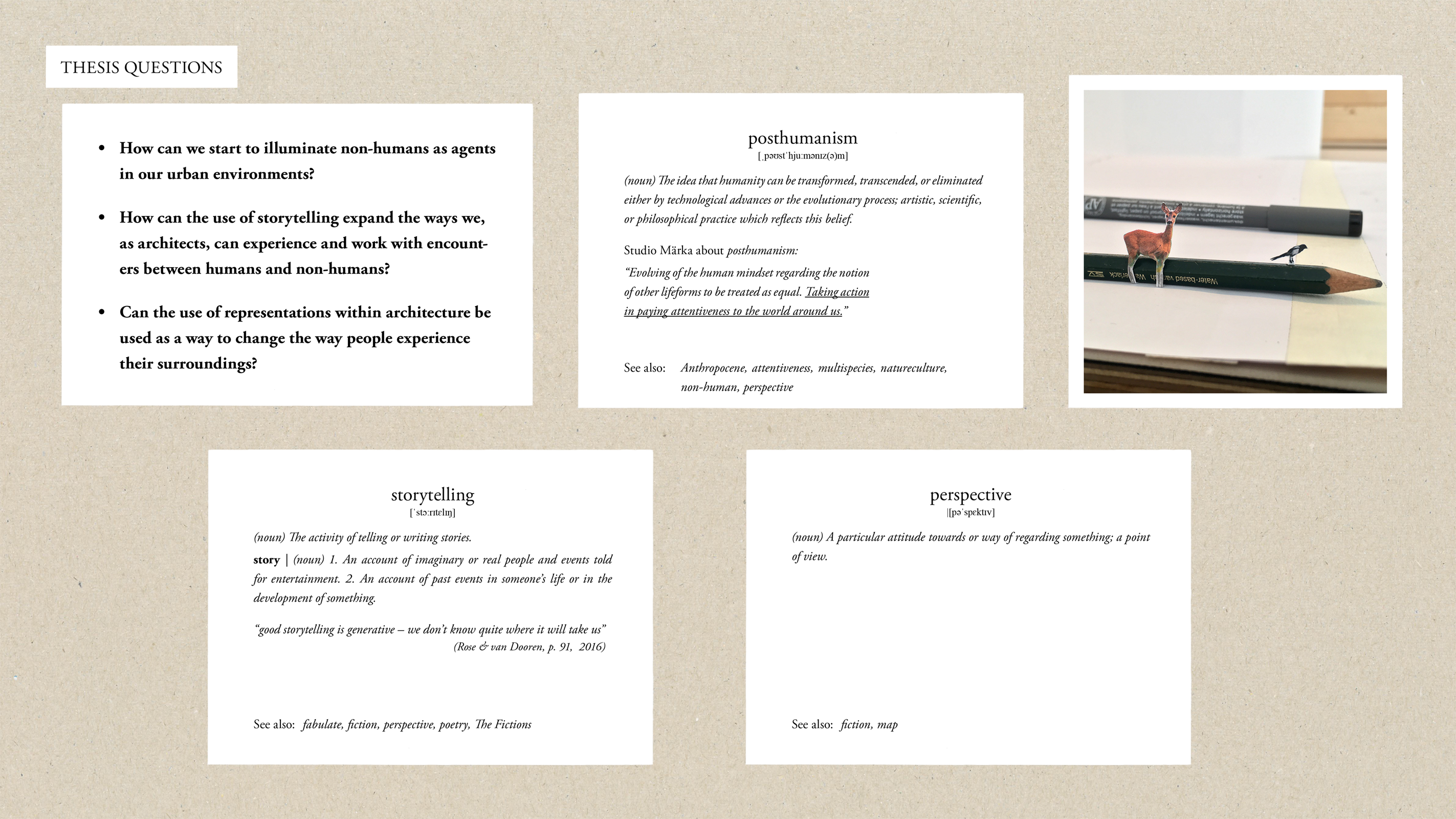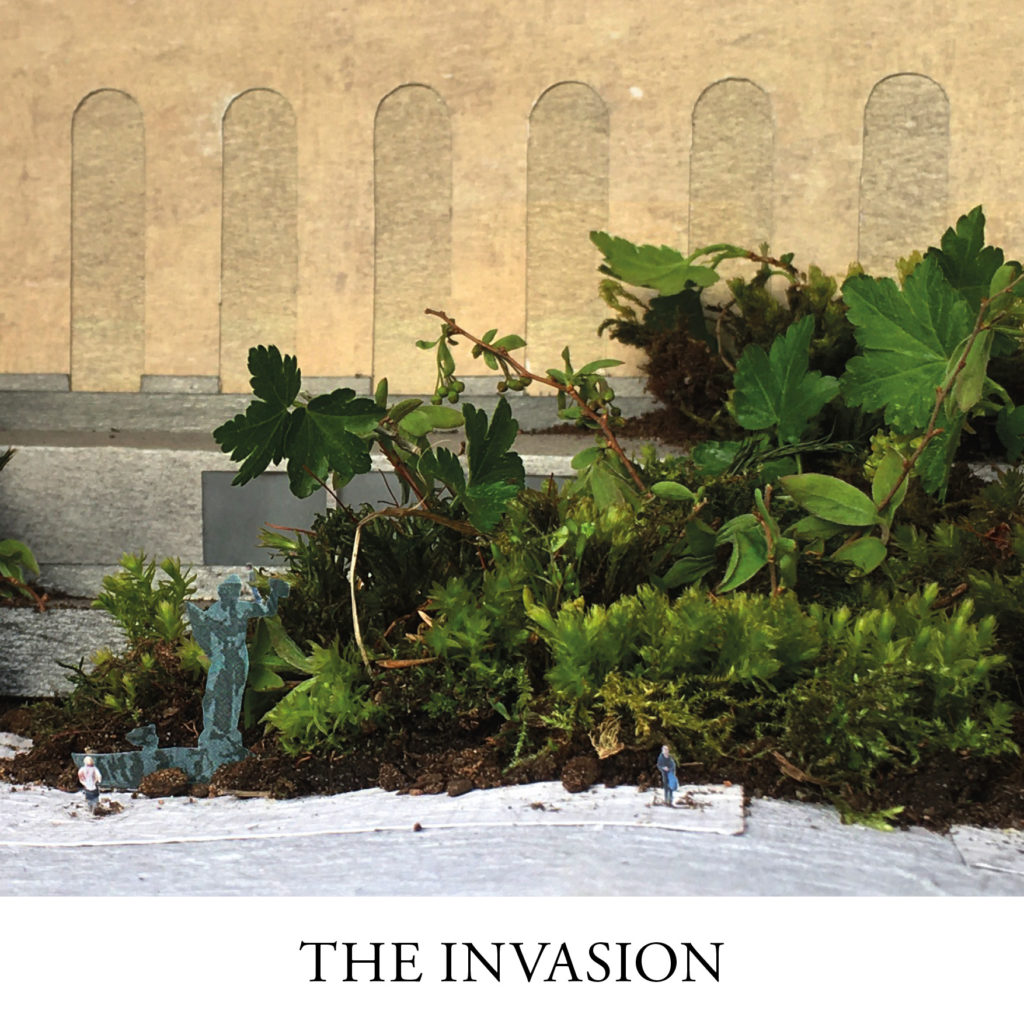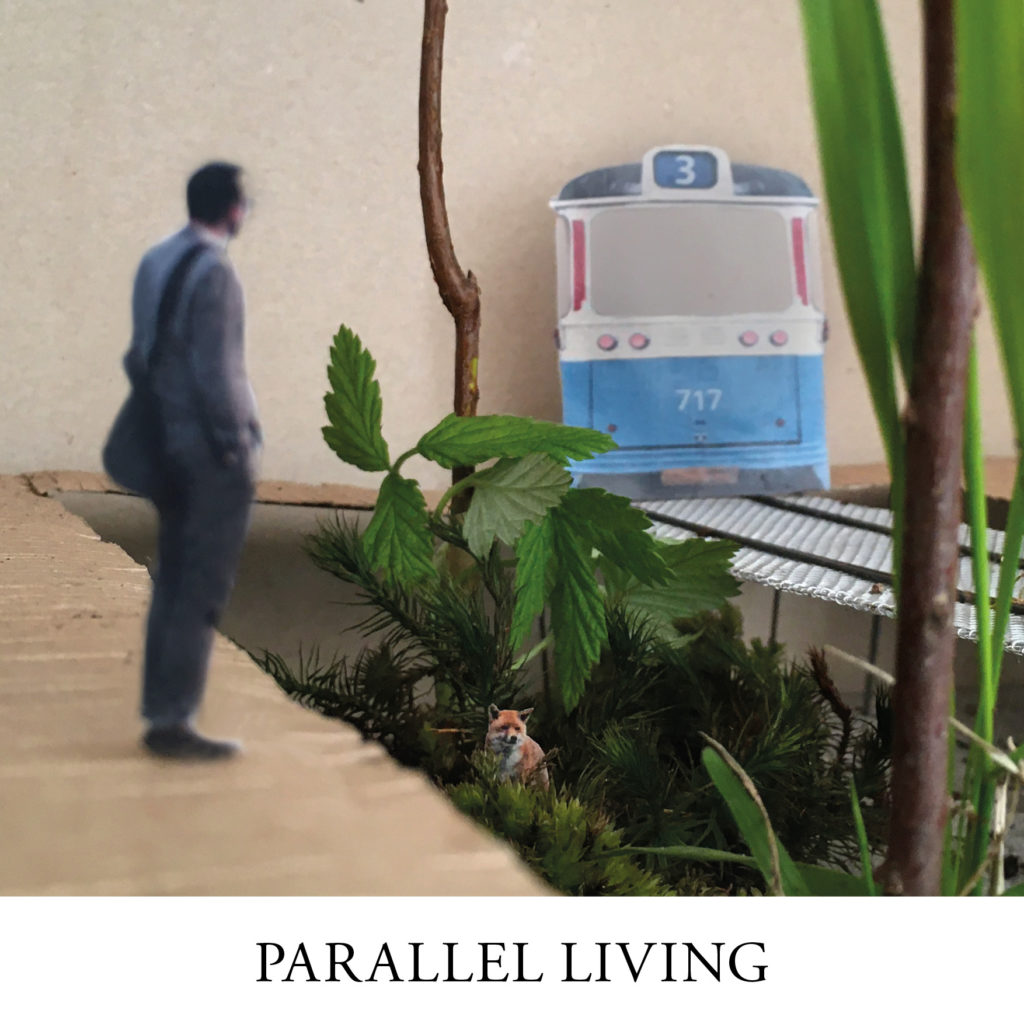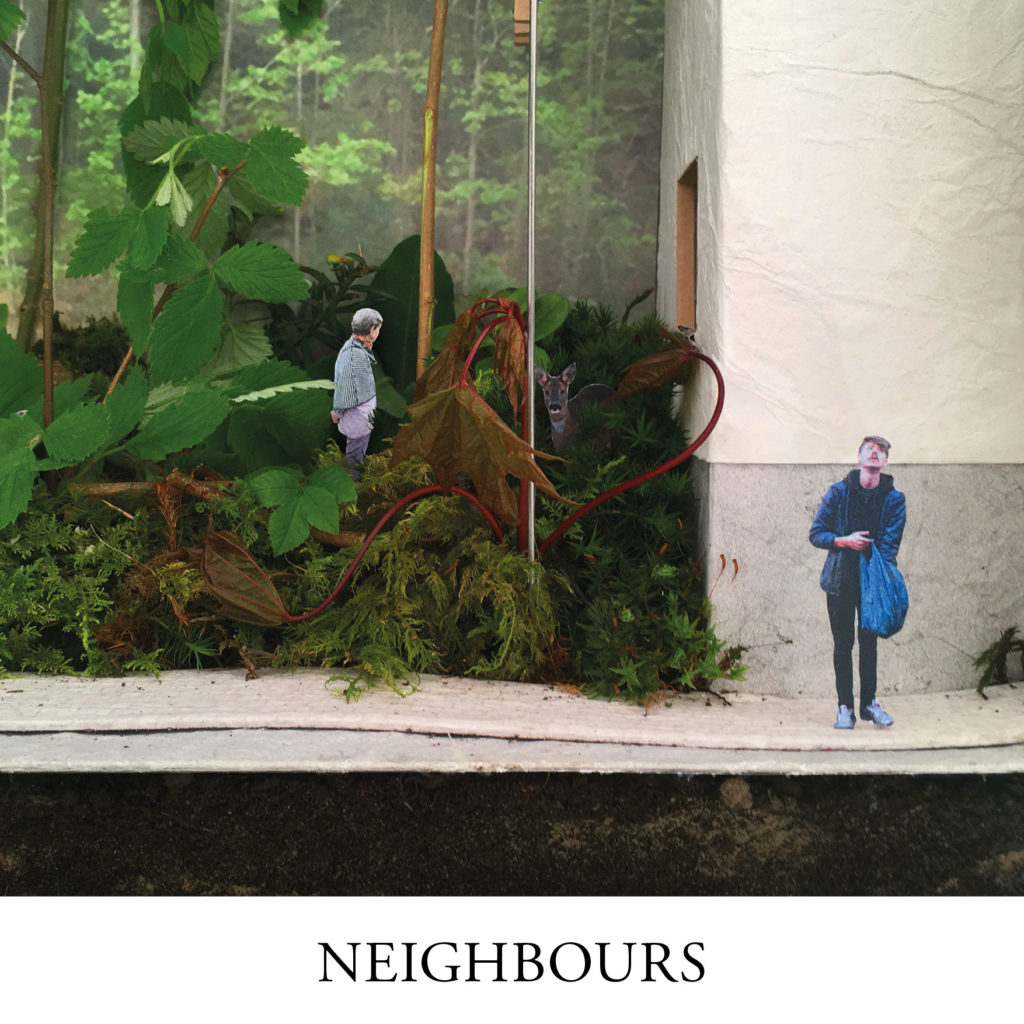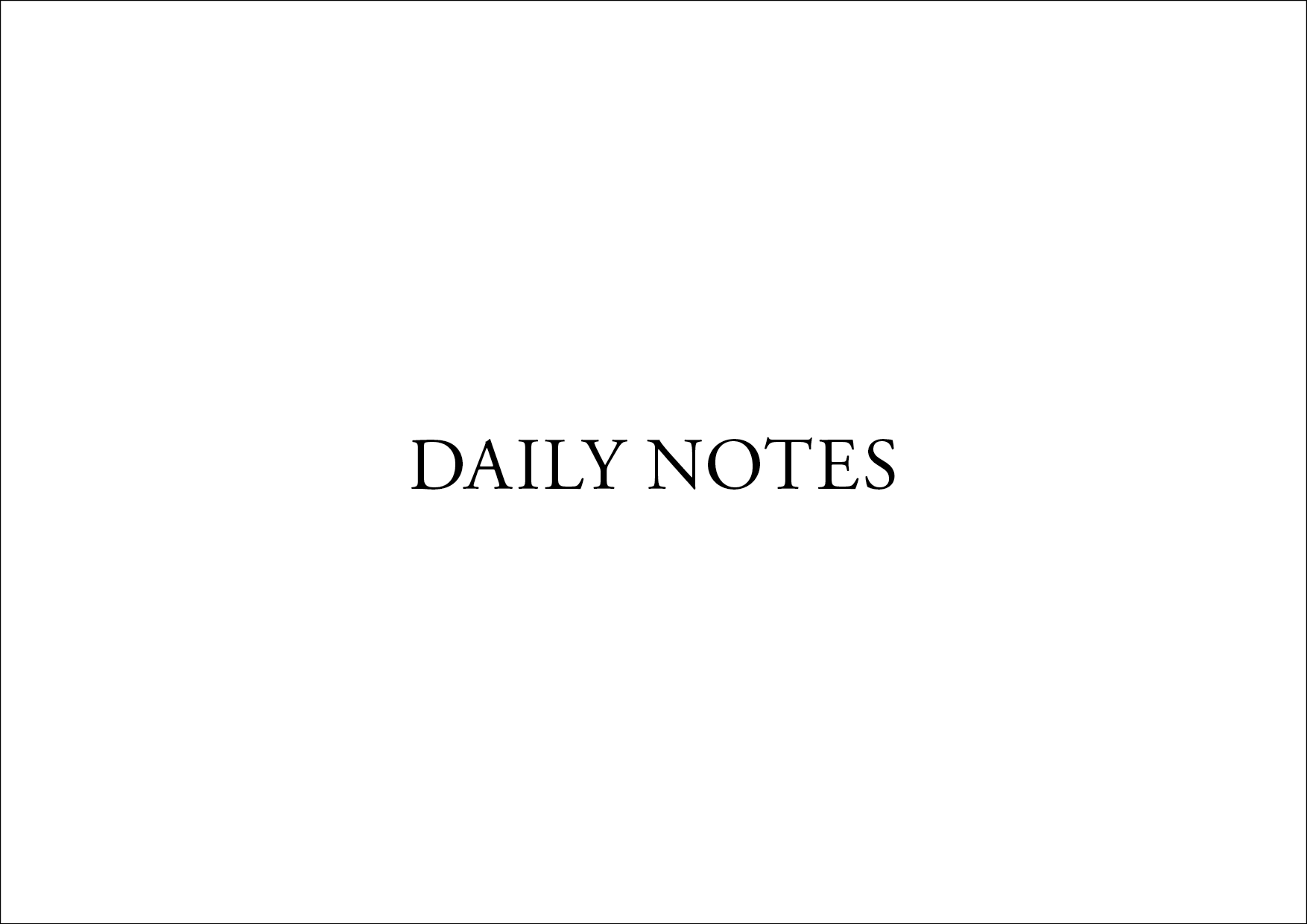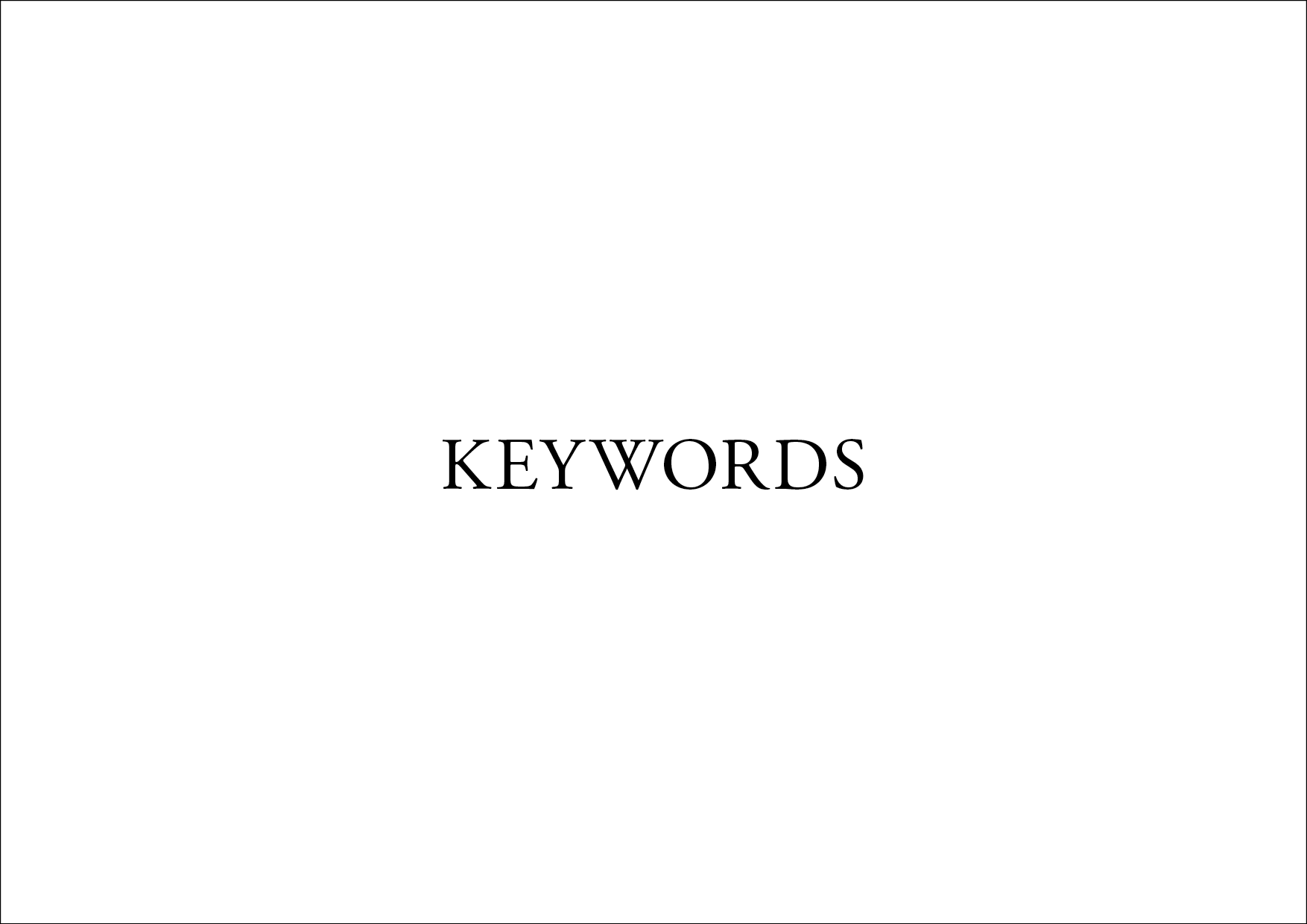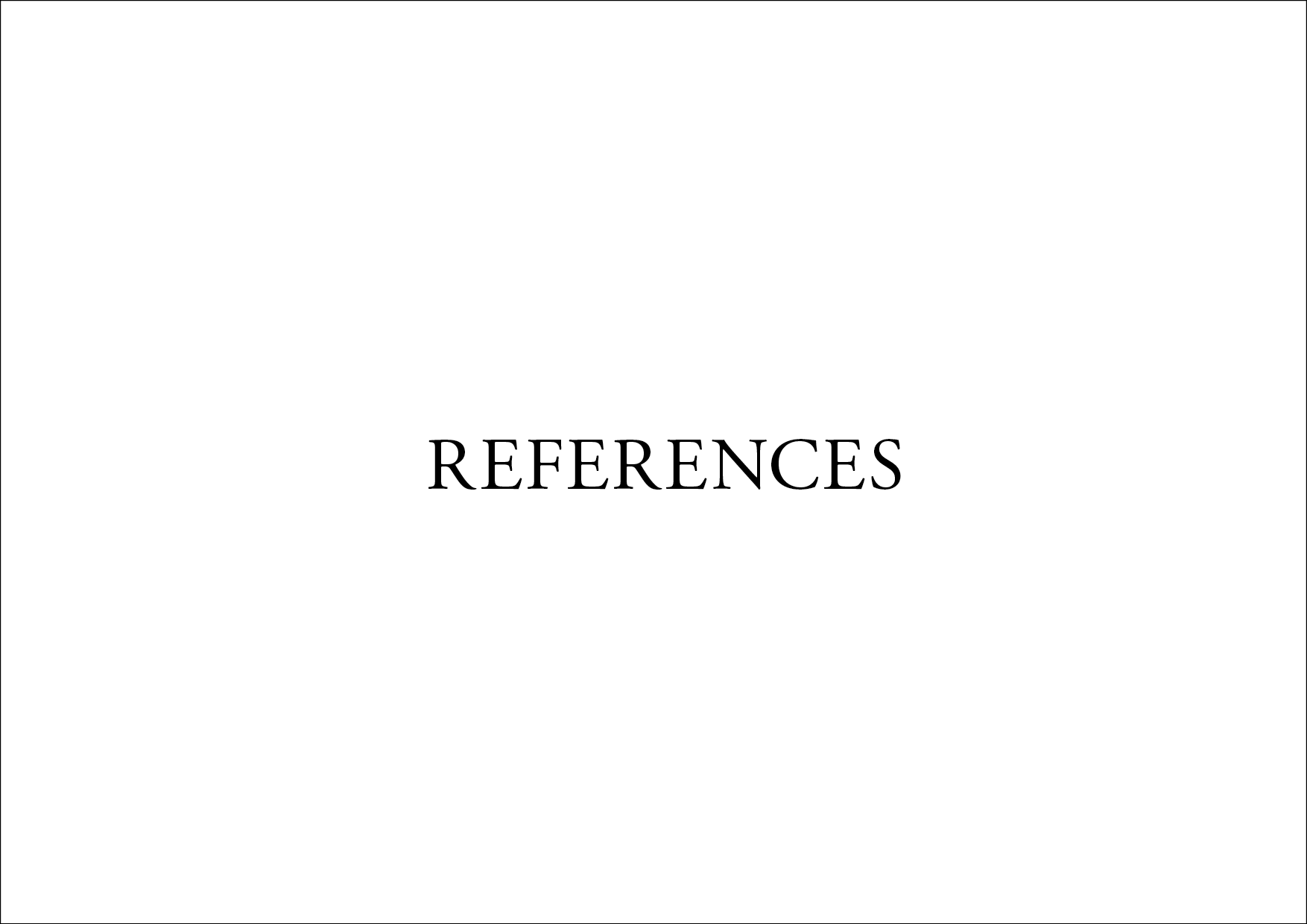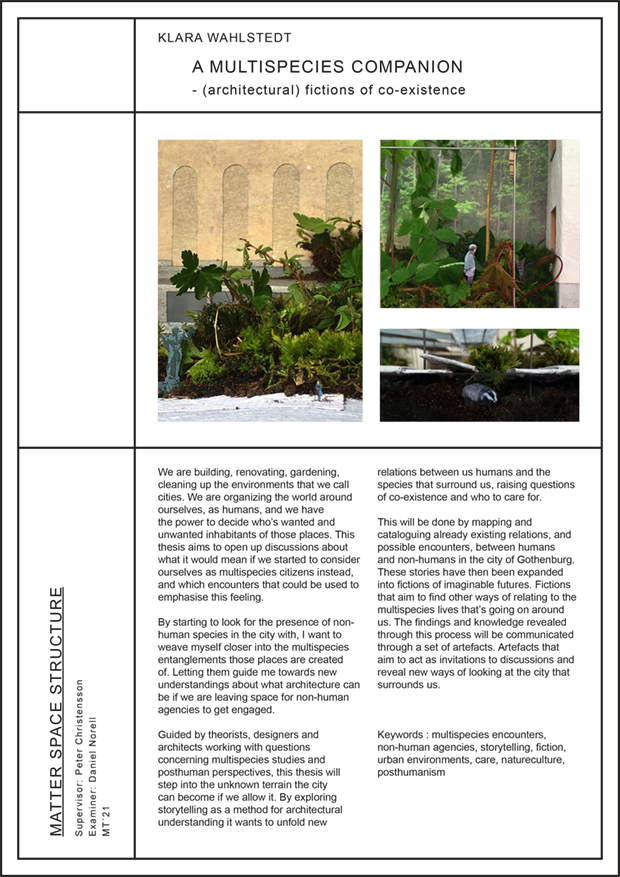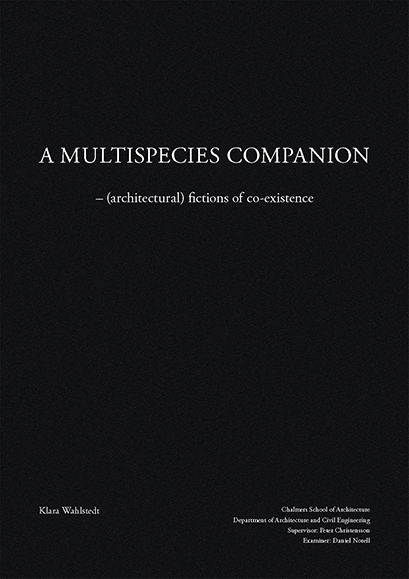A Multispecies Companion
– (architectural) fictions of co-existence
Intro | Outsets | Overview | Fictions | Maps | Index | Abstract & Booklet
Intro
We meet them daily, sometimes they catch our attention and sometimes they just blur into the background noise of the city, other times they are our chosen companions. I talk about the non-humans, the other species we share our cities with. In some cases they are there by our approval, like the family dog or the flowerbed at the square. Other times they are a result of our behaviour. I’m thinking about the house sparrows looking for crumbles next to the café table, or the gulls who flock around left-over food on the streets, rats going through our trash. And there are also times when we humans are less directly involved, when they are there because it was some space left for them to claim. Like the plants growing in the cracks of the pavement, or mosses on the facades.
| Back to the Top |
Outsets
At a web lecture I attended a time ago the urban beekeeper Erika Mayr concluded her intentions with the words: “I want to allow myself to become a multispecies citizen.” Together with a quote by the Swedish poet Johannes Heldén that states: “Want to ask question. Not give answers. And the universe is expanding.”, it has come to act as a kind of guide for what I want to do through this thesis. Erika May’s words seem to conclude my personal aims for this work, I want to allow myself to become a multispecies citizen, and I’m curious where it will take me. Her formulation also includes an important aspect of the subject, an aspect of what it really could be like to acknowledge other species agencies in the places we call cities. We need to allow ourselves she says, that implies that something in our thinking must change for it to happen.
This thesis also wants to talk about how we can raise discussion and talk about things in relation to architecture. Not by proposing building, but by transmitting experience through other mediums that aims to change the way we look at the city that already surrounds us. And how this can be used to raise questions of what it would mean to start to consider oneself as a multispecies citizen. I have no intentions at all of proposing any solutions to these questions, rather to do what the quote of Heldén proposes – to expand once universe.
It’s grounded in my beliefs that fiction and reality are things that can exist side by side, nurturing and learning from each other. Stories are a tool to make other worlds possible, a way of coming closer to and establishing relations between humans and non-humans, changing our current understanding of which lives are to be valued as citizens. They allow us to imagine what could happen rather than what should happen. That storytelling is an act in which we can walk in someone else’s shoes, or fur, for a while. A way of experience rather than tell, and by taking part of a story start to reach an understanding of others.
To raise those questions about co-existence in urban environments I will start to map already existing relations and possible encounters between humans and non-humans in the city of Gothenburg. The material has been collected from a couple of places which I have returned to during the project. Some of the places I have visited every week, others I have just passed by, but start to return to since there was something there which caught my interest. The stories I found myself a part of while visiting those places are collected under the title daily notes and are to be found on the collection of index cards. These observations are the foundation of this thesis, they may be personal, but they tell the story of a human (me) who started to pay attention to the non-humans she shares the city with.
By using these stories as my ground fabric, I want to embroider them into fictions of imaginable futures in order to find ways of acknowledging and nurturing the relations that’s already here. The thesis aims to search for ways to open up conversations about multispecies life in the city. To invite the reader/viewer to reconsider our approach towards non-humans. It touches upon the question of which species we (as humans) are accepting and rejecting, but it’s not interested in solving issues like how we in a practical way can change that behaviour. It rather wants to illuminate the encounters between humans and non-humans that takes place in the city, and raise our attentiveness towards them, and hopefully make people start to reflect upon those issues on their own.
The findings and knowledge revealed through this process will be communicated through a set of artefacts, which aims to invite to discussions and reveal new ways of looking at the city that surrounds us. The artefacts are tools of communication and representation. They are an invitation for other human beings to step into the thoughts that run through this thesis. Likewise they are a tool that I have used to grasp some kind of understanding of what it could mean to become a multispecies citizen. In themselves they may not be architecture (in the build sense of the word), but by taking part of the stories they transmit our way of looking at the architecture of the city hopefully can hopefully start to change.
| Back to the Top |
Overview
Places of Observation
This project collects its stories from a couple of places which I have returned to during my work with this thesis. Some of the places I have visited weekly during a period of time, others I have just passed by, but started to return to since there was something there that caught my interest. The stories I found myself being a part of while visiting those places are collected in a series of index cards under the title daily notes. Some of them have then been illustrated in a series of maps relating to those places. These observations are to be seen as the foundation of this thesis, they may be personal, but they tell the story of a human (me) who started to pay attention to the non-humans she shares the city with.
The Artefacts
The artefacts are a way of communicating and represent the work of this thesis. They are inviting other humans to take part and reflect upon the ideas this thesis is entangled with. By taking part of the stories they transmit the way we perceive the city that surrounds us may change. Not by transforming the environment in any physical way, but by looking at it through the lens of stories. And it is through stories we are able to start to dream about other ways of being.
| Back to the Top |
Fictions
The Fictions are collection of short stories with the aim of faulate about the relations between humans and non-humans in the city. They have no wishes to be possible scenarios, what they wish for is rather to be believable fictions. They are a way to show that the language we use has the capacity to change our environments, not by adding or reducing something material, but by changing the way we experience them.
| Back to the Top |
Maps
The Maps are related to the places of observations and want to view the different encounters with non-human I have had during my walks there, the things that have caught my attention. They may not be maps in the traditional way even if they adapt to the aesthetic of maps – they aim to guide by telling stories rather than showing the way.
| Back to the Top |
Index
The Index is information and stories transmitted on plain white cards with the size of 105 x 148 millimeters, the hierarchy between the different subjects become flattened. The cards have been a part of my process and have made it possible for me to navigate and connect different parts of my thesis. The index is divided into the categories: daily notes, keywords and references.
| Back to the Top |
(click on image to do read or download)
| Back to the Top |

